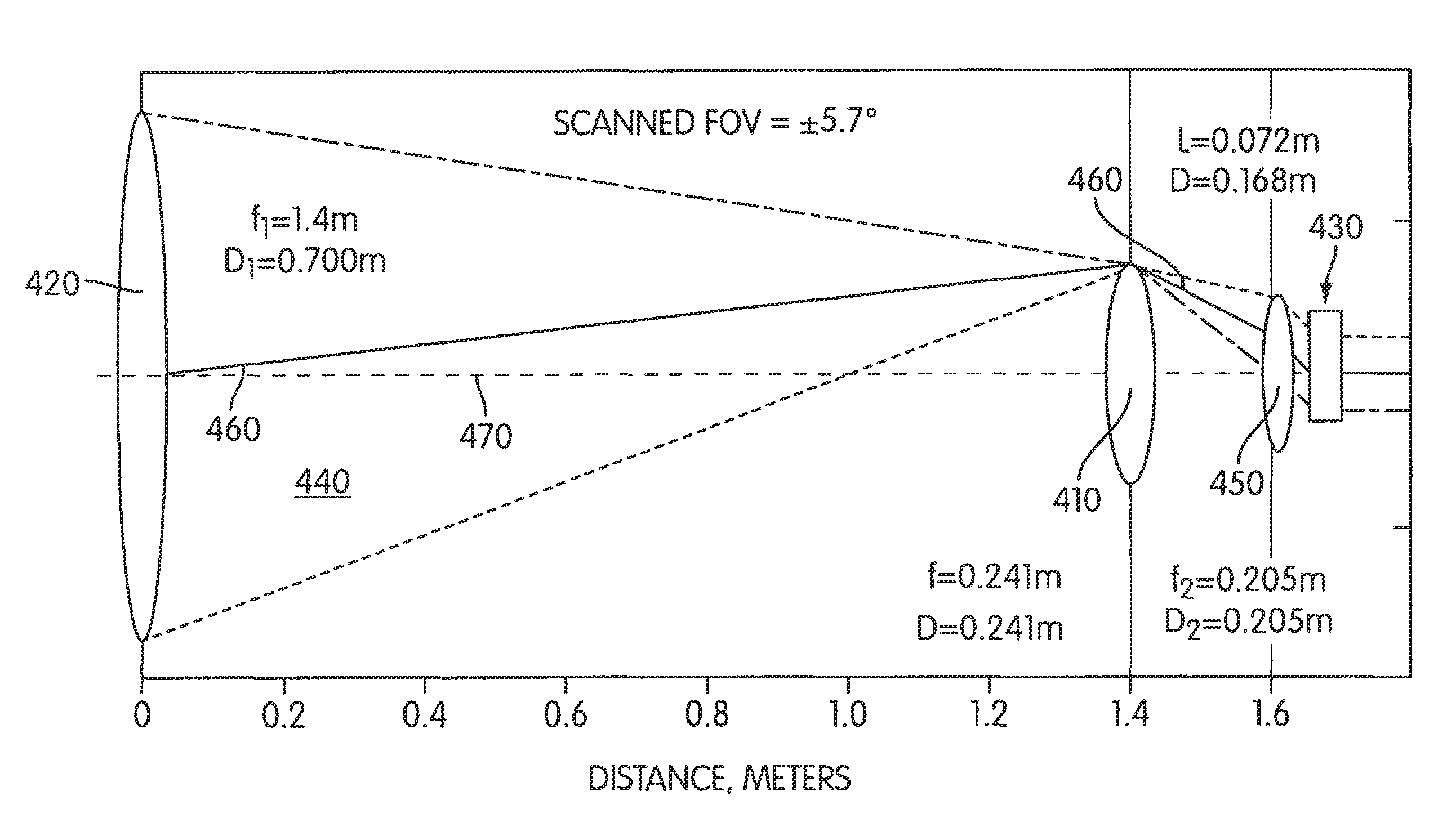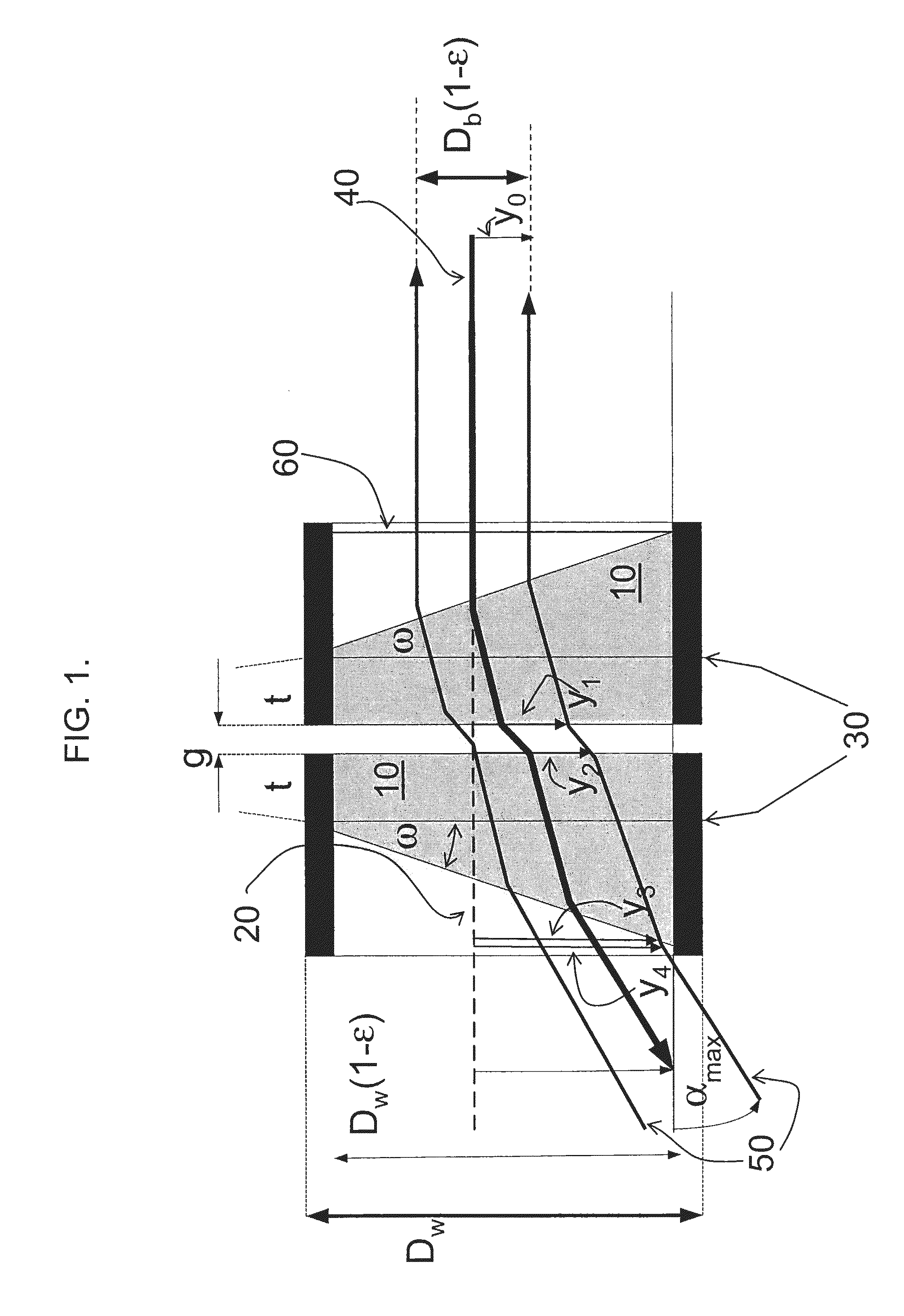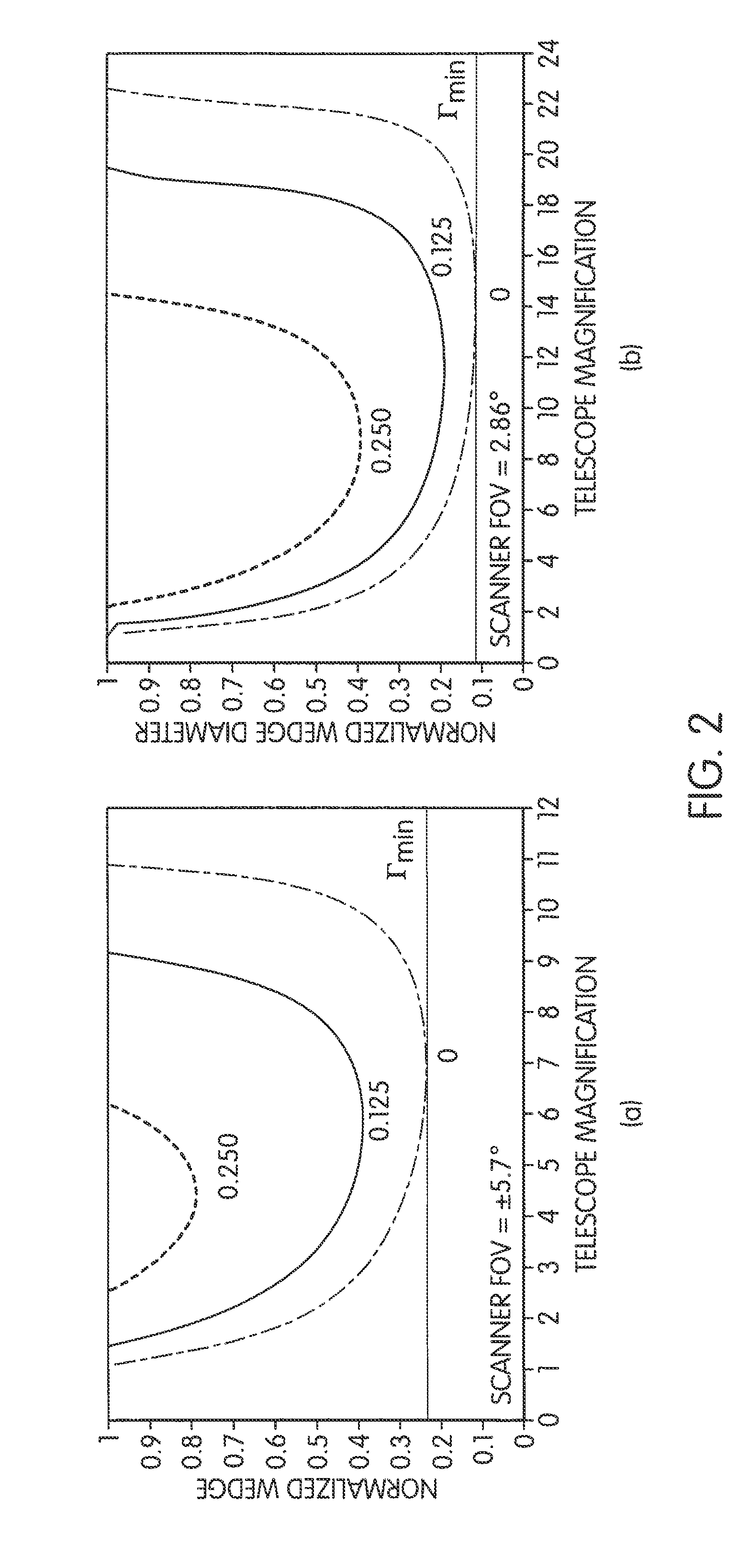Telescope with a wide field of view internal optical scanner
a scanner and telescope technology, applied in the field of telescopes with wide field of view internal optical scanners, can solve the problems of the inability to effectively use the prime power of the instrument, and the inability to achieve the capability through a simple scaling of the laser fire rate or power from spacecraft, etc., to achieve the effect of reducing the area of impa
- Summary
- Abstract
- Description
- Claims
- Application Information
AI Technical Summary
Benefits of technology
Problems solved by technology
Method used
Image
Examples
Embodiment Construction
[0032]While the invention has been shown and described with reference to a particular embodiment thereof, it will be understood to those skilled in the art, that various changes in form and details may be made therein without departing from the spirit and scope of the invention.
[0033]As indicated above, one practical way to generate a continuous topographic map of topographic surfaces from an airborne or spaceborne platform is to use an array of laser beamlets scanned at high speed over the topographic surface and to collect the laser light redirected by the surface into a telescope with internal scanner arranged to feed a photon-counting, focal plane, detector array matched to the array of laser beamlets. In scanner embodiments for spaceborne applications, scanners incorporating uniformly rotating optical elements may be desirable at least because of their inherent simplicity in design, operation and control, reliability, and low power consumption. In the case of embodiments using ...
PUM
 Login to View More
Login to View More Abstract
Description
Claims
Application Information
 Login to View More
Login to View More - R&D
- Intellectual Property
- Life Sciences
- Materials
- Tech Scout
- Unparalleled Data Quality
- Higher Quality Content
- 60% Fewer Hallucinations
Browse by: Latest US Patents, China's latest patents, Technical Efficacy Thesaurus, Application Domain, Technology Topic, Popular Technical Reports.
© 2025 PatSnap. All rights reserved.Legal|Privacy policy|Modern Slavery Act Transparency Statement|Sitemap|About US| Contact US: help@patsnap.com



